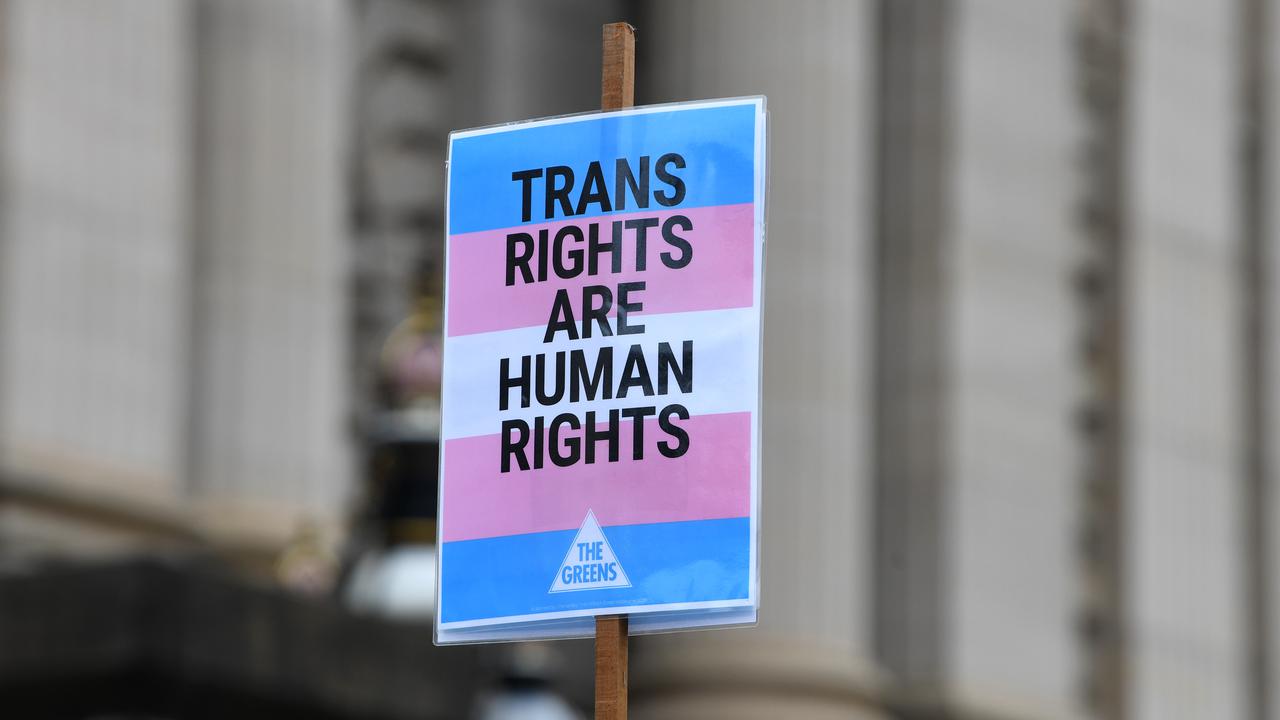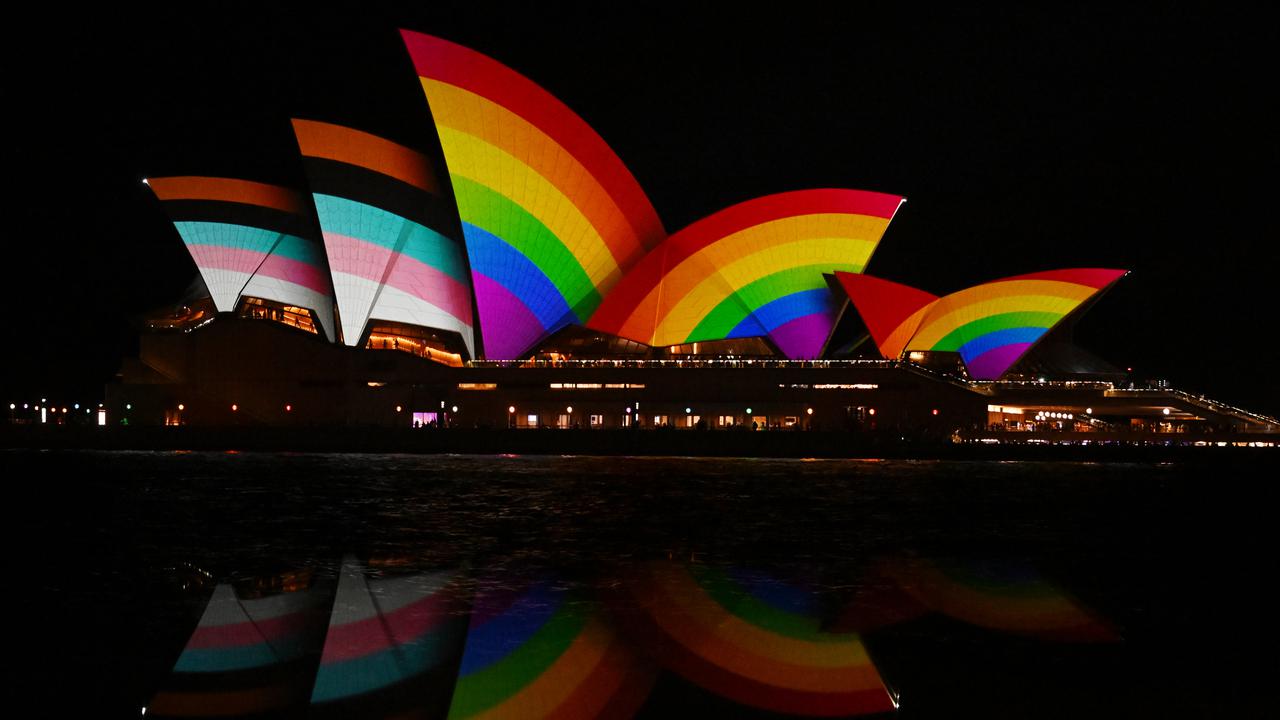WHAT WAS CLAIMED
Seven per cent of the world’s population is transgender.
OUR VERDICT
False. Research generally suggests the actual figure is in the range of 0.33 per cent and 1.6 per cent.
It is been claimed that seven per cent of the global population now identifies as transgender.
The claim is false. Credible surveys in the United States, United Kingdom and Canada put the figure between 0.33 per cent and 1.6 per cent. A survey across 27 countries estimated the figure to be one per cent while an expert also told AAP FactCheck the video's claim is wrong.
Sexual health and relationships counsellor Raelene Stokes made the claim in a Facebook Live discussion (screenshot here) about "queer politics" on February 16, 2023.
She said: "Going back to 2018, the last statistics globally of gender transition, was 0.001 per cent. Now only a couple of years later we're over seven per cent of the world population. So this is actually a phenomena. We're not talking about it. This is a cult. We're not talking about it as the real issue and it is and has taken over," (video mark 19min 34sec).

When asked by AAP FactCheck for the source of the seven per cent figure, Ms Stokes said in an email she thought it was from either a book by Abigail Shrier, a journalist who has written about "the transgender craze", or a podcast or interview with Canadian academic Jordan Peterson.
Neither Mr Peterson nor Ms Shrier responded when AAP FactCheck contacted them to ask if they had used the seven per cent figure. AAP FactCheck could not find any evidence either had used that figure for the global transgender population.
However, in a 2021 YouTube conversation between the pair, Ms Shrier (audio mark 13:20) referred to figures from the US. She claimed two per cent of high school students referred to themselves as transgender, up from a "historical rate" of 0.01 per cent.
Mr Peterson appeared to repeat the figure later in the same video (audio mark 32:40).
Transgender is an umbrella term for people with a gender identity that differs from the sex legally assigned to them at birth. Non-binary is often included under the transgender umbrella - although not all non-binary people identify as transgender.
Transgender people may take steps to transition to their nominated gender, such as changing their clothing, pronouns or identification documents. Some change their physical characteristics using hormones or other medical procedures.
AAP FactCheck could not find any reference to the claimed seven per cent figure.
One of the world's leading experts on lesbian, gay, bisexual and transgender demographics told AAP Factcheck he was not aware of any surveys that showed seven per cent of people identified as transgender.
Dr Gary J. Gates, who has assisted US state and federal agencies as well as national polling organisations, suggested the seven per cent figure could have mistakenly come from this recent data that showed 7.2 per cent of US adults identified as LGBTQIA+.
He added that the vast majority of related prevalence data comes from Western countries, "so it's dubious to assume those figures can be used for a global estimate".
An Ipsos survey from 2021 estimated the global average of those who identify as transgender, non-binary or gender fluid to be one per cent, based on a poll of 19,069 adults across 27 countries.
A 2022 study from the Williams Institute, a sexual orientation and gender identity research centre at UCLA, found 0.6 per cent of people in the US aged 13 years or older self-reported as transgender. This figure included those who identified as non-binary.
It found younger people were more likely to self-report, with 1.4 per cent of respondents aged 13 to 18 years identifying as transgender compared to 0.5 per cent of those 18 years or older. The study was based on data collected from US residents between 2017 and 2020.
The findings represented a doubling in the self-reported transgender population when compared to the 2011 version of the same research.

In mid-2022, a survey of more than 10,000 adults by US-based think tank Pew Research Center found 1.6 per cent self-reported as transgender. The results were broken down between those who identified as transgender (0.6 per cent) and those who identified as non-binary (1 per cent).
In England and Wales, a question about gender identity in the 2021 census found 0.2 per cent of adults (96,000 people) identified as a trans man or a trans woman. A further 0.06 per cent identified as non-binary (30,000) and 0.04 per cent (18,000) reported a different gender identity.
A further 0.24 per cent (118,000) indicated their gender differed from their birth sex but did not specify their gender identity.
In the 2021 Canadian census, 59,460 of those aged 15 or older identified as transgender and 41,355 as non-binary. When combined, transgender and non-binary respondents made up 0.33 per cent of the population in that age group.
In Australia, the 2021 census allowed respondents to select their sex from three response options - male, female or non-binary - but did not ask people about their gender or variations in sex characteristics.
The non-binary option was marked by 43,220 respondents or 0.17 per cent of the Australian population, the Australian Bureau of Statistics (ABS) reported.
However, the ABS said the question was "not intended or designed to collect data on gender" and could not be used as a meaningful measure of gender diversity, non-binary gender or transgender communities.
In Brazil, a survey with a representative sample of 6000 adults estimated the transgender population to be 0.69 per cent.
It recorded those who identified as non-binary separately, making up 1.19 per cent of respondents.
A 2019 academic review paper assessed gender identity data collected since the 1960s across 17 nations and concluded "realistic estimates" of transgender or nonconforming populations ranged between 0.1 per cent and two per cent, depending on the study and questions asked.
The review included surveys about various types of gender nonconformity.
The 2019 review paper also included a 2010 survey of Taiwanese university students, which found 7.3 per cent of participants who were female at birth said they "often" or "very often" wished they were the opposite sex.
However, the authors of the review study said the figure was likely inflated by the "rather loose definition" of gender dysphoria.

In China, the world's most populous country, the proportion of transgender people appears to be at most one per cent.
The Ipsos survey, which only questioned 1000 people in the country and noted they were "more urban, more educated and/or more affluent than the general population" put the figure at one per cent.
A 2020 letter to The Lancet medical journal estimated the number of transgender people in the nation at 400,000, based on a figure cited in a 2005 Chinese research paper.
If accurate, it would mean transgender people would accounted for about 0.03 per cent of China's total population in 2020, given the country's estimated 2020 population of 1.41 billion people.
The Verdict
The claim that seven per cent of the world's population is transgender is false. Reputable surveys and census records generally put the figure between 0.33 per cent and 1.6 per cent.
Most research into transgender populations has been done in Western nations. There is no evidence to suggest the proportion of transgender people would be significantly higher in other parts of the world.
False - The claim is inaccurate.
AAP FactCheck is an accredited member of the International Fact-Checking Network. To keep up with our latest fact checks, follow us on Facebook, Twitter and Instagram.












